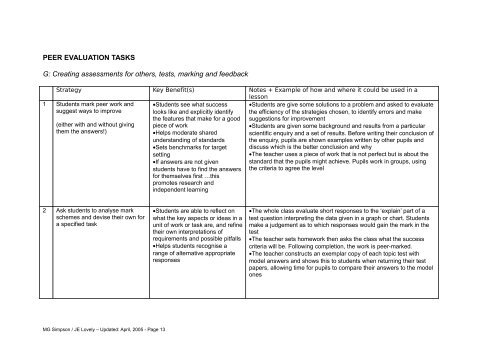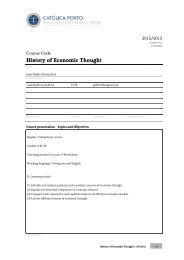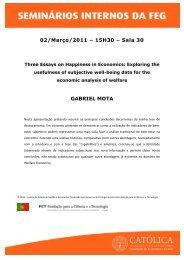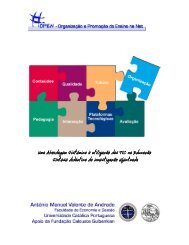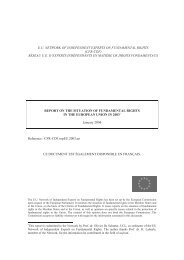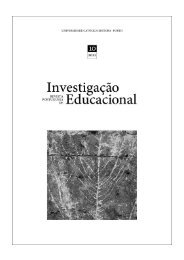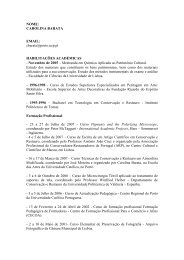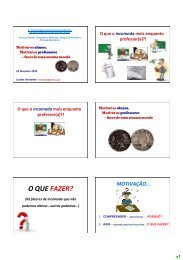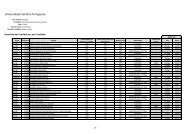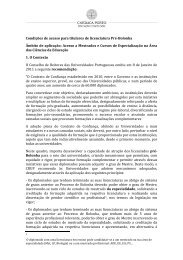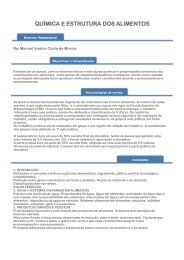Peer and Self evaluation strategies – a start
Peer and Self evaluation strategies – a start
Peer and Self evaluation strategies – a start
Create successful ePaper yourself
Turn your PDF publications into a flip-book with our unique Google optimized e-Paper software.
PEER EVALUATION TASKS<br />
G: Creating assessments for others, tests, marking <strong>and</strong> feedback<br />
Strategy Key Benefit(s) Notes + Example of how <strong>and</strong> where it could be used in a<br />
lesson<br />
1 Students mark peer work <strong>and</strong><br />
suggest ways to improve<br />
(either with <strong>and</strong> without giving<br />
them the answers!)<br />
•Students see what success<br />
looks like <strong>and</strong> explicitly identify<br />
the features that make for a good<br />
piece of work<br />
•Helps moderate shared<br />
underst<strong>and</strong>ing of st<strong>and</strong>ards<br />
•Sets benchmarks for target<br />
setting<br />
•If answers are not given<br />
students have to find the answers<br />
for themselves first …this<br />
promotes research <strong>and</strong><br />
independent learning<br />
•Students are give some solutions to a problem <strong>and</strong> asked to evaluate<br />
the efficiency of the <strong>strategies</strong> chosen, to identify errors <strong>and</strong> make<br />
suggestions for improvement<br />
•Students are given some background <strong>and</strong> results from a particular<br />
scientific enquiry <strong>and</strong> a set of results. Before writing their conclusion of<br />
the enquiry, pupils are shown examples written by other pupils <strong>and</strong><br />
discuss which is the better conclusion <strong>and</strong> why<br />
•The teacher uses a piece of work that is not perfect but is about the<br />
st<strong>and</strong>ard that the pupils might achieve. Pupils work in groups, using<br />
the criteria to agree the level<br />
2 Ask students to analyse mark<br />
schemes <strong>and</strong> devise their own for<br />
a specified task<br />
•Students are able to reflect on<br />
what the key aspects or ideas in a<br />
unit of work or task are, <strong>and</strong> refine<br />
their own interpretations of<br />
requirements <strong>and</strong> possible pitfalls<br />
•Helps students recognise a<br />
range of alternative appropriate<br />
responses<br />
•The whole class evaluate short responses to the ‘explain’ part of a<br />
test question interpreting the data given in a graph or chart. Students<br />
make a judgement as to which responses would gain the mark in the<br />
test<br />
•The teacher sets homework then asks the class what the success<br />
criteria will be. Following completion, the work is peer-marked.<br />
•The teacher constructs an exemplar copy of each topic test with<br />
model answers <strong>and</strong> shows this to students when returning their test<br />
papers, allowing time for pupils to compare their answers to the model<br />
ones<br />
MG Simpson / JE Lovely <strong>–</strong> Updated: April, 2005 - Page 13


